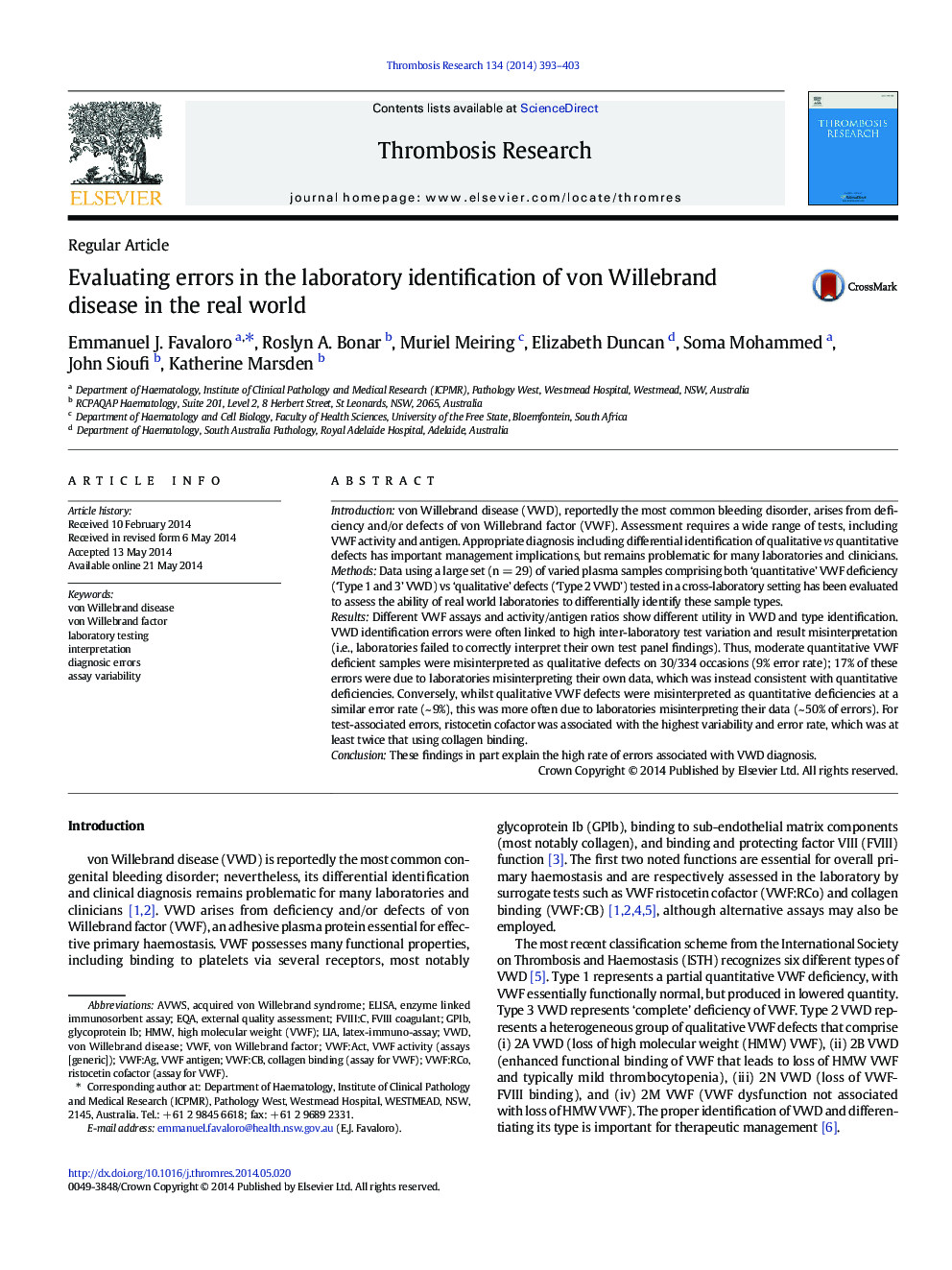| Article ID | Journal | Published Year | Pages | File Type |
|---|---|---|---|---|
| 6002337 | Thrombosis Research | 2014 | 11 Pages |
Introductionvon Willebrand disease (VWD), reportedly the most common bleeding disorder, arises from deficiency and/or defects of von Willebrand factor (VWF). Assessment requires a wide range of tests, including VWF activity and antigen. Appropriate diagnosis including differential identification of qualitative vs quantitative defects has important management implications, but remains problematic for many laboratories and clinicians.MethodsData using a large set (n = 29) of varied plasma samples comprising both 'quantitative' VWF deficiency ('Type 1 and 3' VWD) vs 'qualitative' defects ('Type 2 VWD') tested in a cross-laboratory setting has been evaluated to assess the ability of real world laboratories to differentially identify these sample types.ResultsDifferent VWF assays and activity/antigen ratios show different utility in VWD and type identification. VWD identification errors were often linked to high inter-laboratory test variation and result misinterpretation (i.e., laboratories failed to correctly interpret their own test panel findings). Thus, moderate quantitative VWF deficient samples were misinterpreted as qualitative defects on 30/334 occasions (9% error rate); 17% of these errors were due to laboratories misinterpreting their own data, which was instead consistent with quantitative deficiencies. Conversely, whilst qualitative VWF defects were misinterpreted as quantitative deficiencies at a similar error rate (~ 9%), this was more often due to laboratories misinterpreting their data (~ 50% of errors). For test-associated errors, ristocetin cofactor was associated with the highest variability and error rate, which was at least twice that using collagen binding.ConclusionThese findings in part explain the high rate of errors associated with VWD diagnosis.
